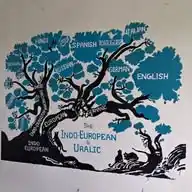
English Studies
May 24, 2025 at 09:58 AM
#cfp: "Yearbook of the German Children’s Literature Research Society 2026"
Topic: “Forest - Wald”
Proposal deadline: 15 June 2025
Article deadline: 2 February 2026
Email: [email protected]
Website: https://ojs.ub.uni-frankfurt.de/gkjf/index.php/jahrbuch/cfp
---------------------------------------------------
Call for Papers: Yearbook of the German Children's Literature Research Society 2026
Topic: Forest
From the semantics of the German Waldeinlichkeit (forest solitude) to dystopia, the forest as a literary location evokes different meanings: It can offer retreat and protection, but it can also be a threatening and dangerous place. These long-standing literary traditions are narrated in various genres and are often associated with specific ideas of childhood. In Ludwig Tieck's The Elves (1812), the mother warns the children not to go into the forest: “Be careful, children […] don't run too far from home or into the forest” (Tieck 306). The text goes on to reveal that the forest harbors a secret. In ETA Hoffmann's story The Strange Child (1819), on the other hand, the forest is a symbolically charged place of retreat and play that can only be experienced by children. But here, too, there are hints of ambivalence, and the text finally marks the end of childhood by the loss of the forest space.
It is precisely this loss of childhood that Theodor Storm laments in his poem Garten-Spuk (Spook in the Garden, 1858): For Storm, the forest is the place of a past childhood that is impossible to recapture. In the comic Unfollow (2020), Lukas Jüliger takes up the close connection between childhood and nature again, but places it in the context of the culture of digitality (Stalder 2016); as a young adult the main character becomes a social media star who promotes life in harmony with nature.
In the context of nature, culture, art, and literature, the forest is firmly anchored as a symbol, motif, and place of action (Zechner 2016). The next issue of the Yearbook of the German Children's Literature Research Society is therefore dedicated to the forms and functions of forests and their diachronic lines of development.
To this day, many depictions of the forest are characterized by mythical ideas, which became a central theme during the German Romantic period under the catchphrase of forest loneliness . In many literary and artistic works, the forest is characterized as a portal to other worlds, as a gateway, or as a place of self-discovery and testing. The topos of the forest is also prominent in current novels and picture books for children and young adults, especially in texts that deal with the processes of climate change, where it appears as a space that is under massive threat ( Greta and the Giants 2019; Le peuple du chemin 2019; Princess Mononoke 1997), or is closely intertwined with questions of (cultural) identity ( City of Trees 2024).
There is broad research on the forest, for example as a motif or symbol. Various theoretical perspectives can be used for the yearbook edition, such as ecocriticism or spatial theory. Intersectional approaches that focus on the relationship between natural space, gender, and race, for example, along with inter- and transmedia perspectives that analyze the representation of forests in different media. In particular, case studies dealing with the connection between representations of childhood and representations of the forest are welcome.
The contributions should address the breadth and diversity of the topic from both a theoretical and a subject-oriented perspective in the various genres (novels, short prose, poetry, plays, picturebooks, non-fiction, comics, graphic novels, audio media, films, TV series, computer games). Contributions may be in German or English, and while articles on German children's literature and media are particularly welcome, the editors also welcome proposals on other cultural and linguistic areas. Possible topics, questions, and focal points, each with reference to children's and young adult literature and media, would be
- Forest as space,
- Concepts and constructs of childhood,
- Methods of creating atmosphere,
- Specifics of different media: the forest in image and sound, materiality of the forest,
- Diachronic perspectives, for example with a view to Romanticism and other continuations,
- Ecocriticism/ecological literary studies and the forest,
- Intersectionality and the forest.
In addition to the main topic, we also welcome contributions on other issues relating to children's and young adult literature and media from a historical and theoretical perspective.
Formalities
Please send a proposal of no more than 2 000 characters (including spaces) for a contribution on the focus topic or for an open contribution by 15 June 2025. The proposal should provide a short summary of the questions being addressed, establish theoretical positions, and name the main literature to which the contribution will refer.
Notices of acceptance and invitations to submit a full manuscript will be sent out, together with a style sheet, by July 31, 2025 .
The contribution itself should not exceed 40 000 characters (including abstract, footnotes bibliography and short CV) and should be submitted to the editors as a Word document by 02 February 2026.
We look forward to receiving your proposal. Please send it to [email protected]
The Yearbook will be published in December 2026 on the website https://ojs.ub.uni-frankfurt.de/gkjf
Yearbook of the Society for Children's and Young Adult Literature Research | GKJF
Editors
Prof. Julia Benner, Humboldt University of Berlin
Prof. Thomas Boyken, Carl von Ossietzky University of Oldenburg
Prof. Gabriele von Glasenapp, University of Cologne
Prof. Lena Hoffmann, Bielefeld University
Jun.-Prof. Anna Stemmann, University of Leipzig